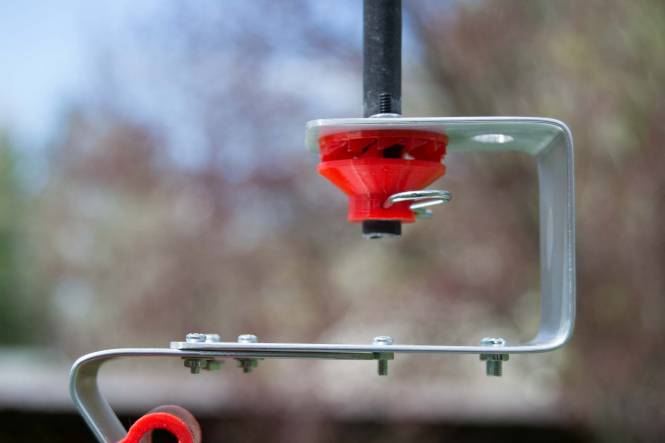Aerobee Lite
I was in southeast Alaska for two weeks in August and had KAP gear ready to go at all times. There was only one day when there was enough wind to lift a kite, and the breeze was never more than about 8 mph. Fortunately I had just the right gear and the perfect helpers, including Ellie who had made the kite we were flying.
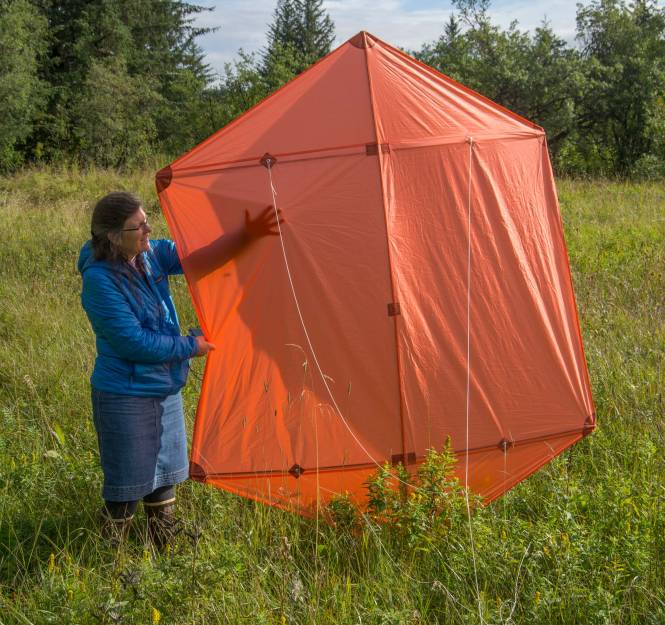 |
| Ellie inspects her Rokkaku. She mailed the sail to me in Vermont but had not yet seen it with the spars installed. |
Ellie's seven foot Rokkaku was the perfect kite for the light north wind that appeared over Gustavus as it cleared in late afternoon. It took 30 minutes of trying before a gust allowed the Rok to pull the camera high enough so that the Rok could find a steady breeze and keep all 500 feet of line out for 20 minutes or so.
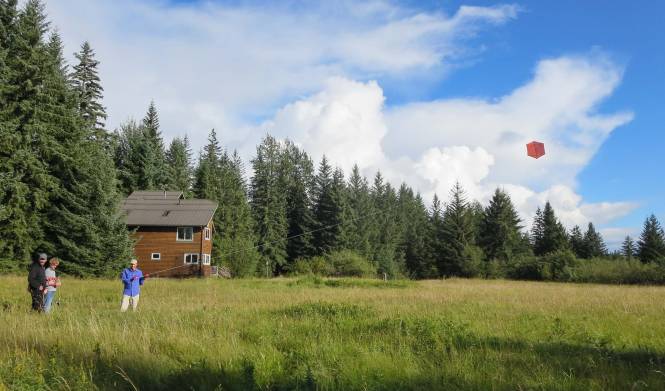 |
| We spent a half hour trying to get the kite higher than this and our persistence paid off. Photo by Ellie. |
The camera was a Canon PowerShot S100 which is the lightest camera I have flown for the past few years. It was on an Aerobee Rig which had been stripped of everything non-essential including everything that might have protected the camera. The rig and camera weighed only 300 grams total.
The JerkPan on the Aerobee Rig was engaged, so by jerking the kite line I could make the rig rotate a few degrees and point the camera in a new direction. The camera was taking a photo every five seconds and took 429 photos including lots of close ups of grass before the critical gust arose.
We walked around the meadow to include some of the neighbors in the photos. The goal was to stitch several photos together to make one or more aerial panoramas of the neighborhood.
 |
| These six photos were taken in less than a minute. I jerked the kite line, the JerkPan rotated the camera, and the camera was shooting every five seconds. |
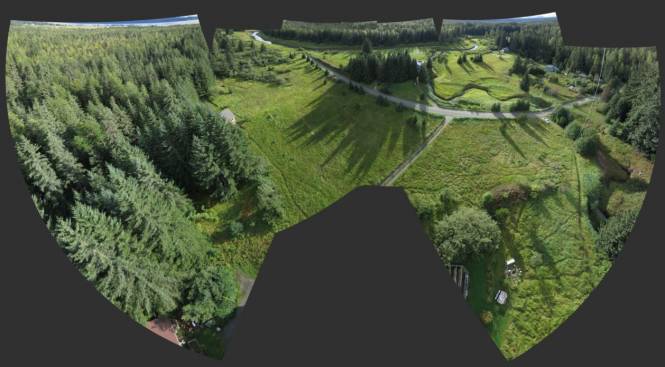 |
| The six photos above were stitched in Microsoft ICE with this result. I cropped most of the image away and after a little work in Photoshop got the panorama below. |
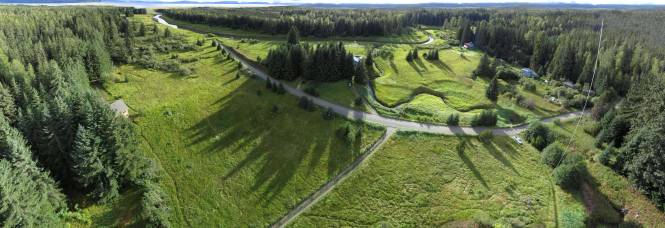 |
| Sun rakes across Harry Hall Creek and the Good River. Most of the trails through the meadow plants are made by black bears. |
Flight notes:
Kite: The Kite Girl Tangellie 7 foot Rokkaku
Camera: Canon PowerShot S100 in portrait mode
KAP rig: Stripped down Aerobee Rig (no legs or camera tray)
Panning: The JerkPan was engaged and the rig was rotated (360°) 7 times at altitude
Wind: North at 5-8 mph at 300 feet (it took 30 minutes to get the kite to altitude)
Altitude: 500 feet of line was out so the camera was about 200 to 250 feet above the ground
Exposure: Tv at 1/800 second, all these photos were taken at f/2.0 (max aperture), it might have been better to use a slightly slower shutter speed and higher ISO so the aperture would have been smaller (better image quality)
Settings: ISO 80, 24mm (35mm equivalent), manual focus on infinity, CHDK script triggered the shutter every 5 seconds
Flight duration: 429 photos were taken in 55 minutes
Stitching: Microsoft ICE. I used the stereographic projection, but several others are available in ICE, and each projection allows some manual adjustments
Image: The final image here is 4000 pixels across, the original is 6000 pixels across


